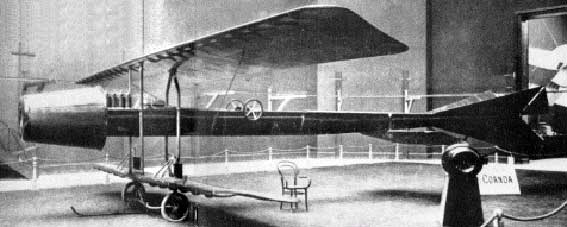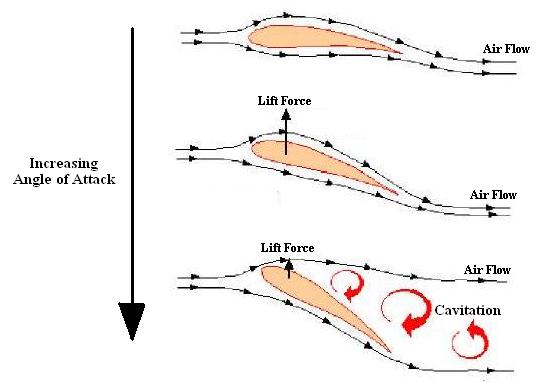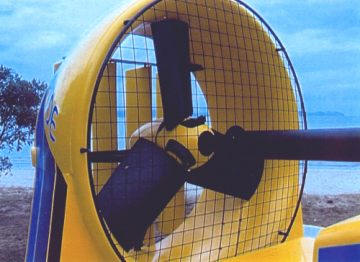1700-1782

| NAME |
|
A closer look at how propellers cause forward thrust will reveal that the hovercraft moves forward by pushing air behind it. Exactly how does the propeller push air behind it? To understand this we turn to a principle that was discovered about 300 years ago, Bernoulli’s Principle.

Bernoulli's Principle: An increase in the velocity of any fluid is always accompanied by a decrease in pressure.
Since air behaves exactly like a fluid, Bernoulli’s principle
applies. Any time the wind is blowing or a fan blows air, the pressure of the
moving air becomes less than it would be if the air wasn't moving. As an aside,
this characteristic plays a huge role in how weather systems work! If you can
cause air to move faster on one side of a surface than the other, the pressure
on that side of the surface will be less than the pressure on its other side.
One of the most widely used applications of Bernoulli's principle is in the
airplane wing. Wings are shaped so that the top side of the wing is curved while
the bottom side is relatively flat. In motion, the front edge of the wing hits
the air, and some of the air moves downward below the wing, while some moves
upward over the top. Since the top of the wing is curved, the air above the
wing must move up and down to follow the curve around the wing, while the air
below the wing moves very little. The air moving on the top of the curved wing
must travel farther before it reaches the back of the wing; consequently it
must travel faster than the air moving under the wing, to reach the back edge
at the same time. The air pressure on the top of the wing is therefore less
than that on the bottom of the wing, according to Bernoulli’s principle.
The higher pressure air on the bottom of the wing pushes up on the wing with
more force than the lower pressure air above the wing pushes down. This results
in a net force acting upwards called lift. Lift pushes
the wings upwards and keeps the airplane in the air.

Though Bernoulli's principle is a major source of lift in an aircraft wing, a Romanian engineer by the name of Henri Coanda discovered another effect that plays an even larger role in producing lift.

Although generally unrecognized, Coanda was actually the first
person to build and fly a jet powered aircraft. It is commonly believed that
the first jet engines were developed during World War II. Dr. Hans Von Ohain
designed the first German jet aircraft, which made its first flight on August
27, 1939. Unaware of Dr. Von Ohain's work, A British engineer named Sir Frank
Whittle also independently designed a jet aircraft, which first flew on May
15, 1941.
Although these two men are generally thought of as the fathers of jet aircraft,
Henri Coanda built and "flew" the first recorded jet aircraft about
30 years earlier. The somewhat amusing first flight is best described in Coanda's
own words:
"It was on 16 December 1910. I had no intention of flying on that day. My plan was to check the operation of the engine on the ground but the heat of the jet blast coming back at me was greater than I expected and I was worried in case I set the aeroplane on fire. For this reason I concentrated on adjusting the jet and did not realize that the aircraft was rapidly gaining speed. Then I looked up and saw the walls of Paris approaching rapidly. There was no time to stop or turn round and I decided to try and fly instead. Unfortunately I had no experience of flying and was not used to the controls of the aeroplane. The aeroplane seemed to make a sudden steep climb and then landed with a bump. First the left wing hit the ground and then the aircraft crumpled up. I was not strapped in and so was fortunately thrown clear of the burning machine."

The Coanda- 1910, the world's first jet aircraft
Unfortunately Coanda couldn’t obtain funding to continue his research after the wreck, and so his contribution to jet propulsion never became widespread. If he had been able to continue his work, France could have had a jet-powered air force before WW II began. Even though he didn't build another jet aircraft, he did make a very important contribution to how the aircraft wings produce lift when he discovered what is now called the Coanda Effect.
Coanda Effect: A moving stream of fluid in contact with a curved surface will tend to follow the curvature of the surface rather than continue traveling in a straight line.
To perform a simple demonstration of this effect, grab a spoon and find a sink. Get a small stream of water coming down from the sink, then place the bottom of the spoon next to the stream. Notice how the water curves along the surface of the spoon. If you hold the spoon so that it is free to swing, you should be able to notice that the spoon is actually being pulled towards the stream of water.

The same effect occurs with an airplane wing. If the wing is curved, the airflow will follow the curvature of the wing. In order to use this to produce lift, we need to understand something called angle of attack. This gives the angle between the wing and the direction of the air flow, as shown in the following diagram.

The angle of attack indicates how tilted the wing is with respect to the oncoming air. In order to produce lift, or an upward force acting on the wing, Newton's third law says that there must be an equal force acting in the opposite direction. If we can exert a force on the air so that it is directed down, the air will exert an upward force back on the wing. Look at how the Coanda effect directs the airflow for different angles of attack in the diagrams below.

This diagram shows that increasing the angle of attack increases
how much the air is deflected downwards. If the angle of attack is too great,
the air flow will no longer follow the curve of the wing. As shown in the
bottom of the diagram, this creates a small vacuum just behind the wing. As
the air rushes in to fill this space, called cavitation, it causes heavy vibrations
on the wing and greatly decreases the efficiency of the wing. For this reason,
aircraft wings are generally angled like the middle wing in the diagram. This
wing efficiently directs the airflow downward, which in turn pushes up on
the wing, producing lift.
This method of determining lift is called momentum change. Other methods to
calculate the same lift utilize the difference in pressure fields above and
below the wing. Either method is accurate on its own, but never add the two
methods together.
In addition to producing lift on an aircraft, Bernoulli's principle and the
Coanda effect play an important role in the operation of a propeller. Examine
a propeller closely and you will find that the blades of the propeller look
like an airfoil, or wing. Essentially, a propeller blade is a wing turned
on its side. Just as wings traveling forward are lifted upward, a rotating
propeller blade is sucked or pushed forward. A propeller blade also has something
that wings don't: they are twisted. Watch a propeller turn very slowly, and
you will see how the twist of the blade causes it to move the air evenly and
push it backwards. Additionally, the propeller blades are set at an angle.
This is called propeller pitch. The greater the
pitch of the propeller, the more air it can push. Blades of common household
fans are also slightly angled to help move air for cooling. Ideally an equal
quantity of air will pass the blade at its root (the hub of the propeller)
and its tip, but the tip travels much faster than the root. To maintain an
even flow rate as much as possible, the hub pitch (pitch at the root of the
propeller) has to be very steep while the propeller tips have to be almost
flat! This will help insure an even flow of air through the duct.
